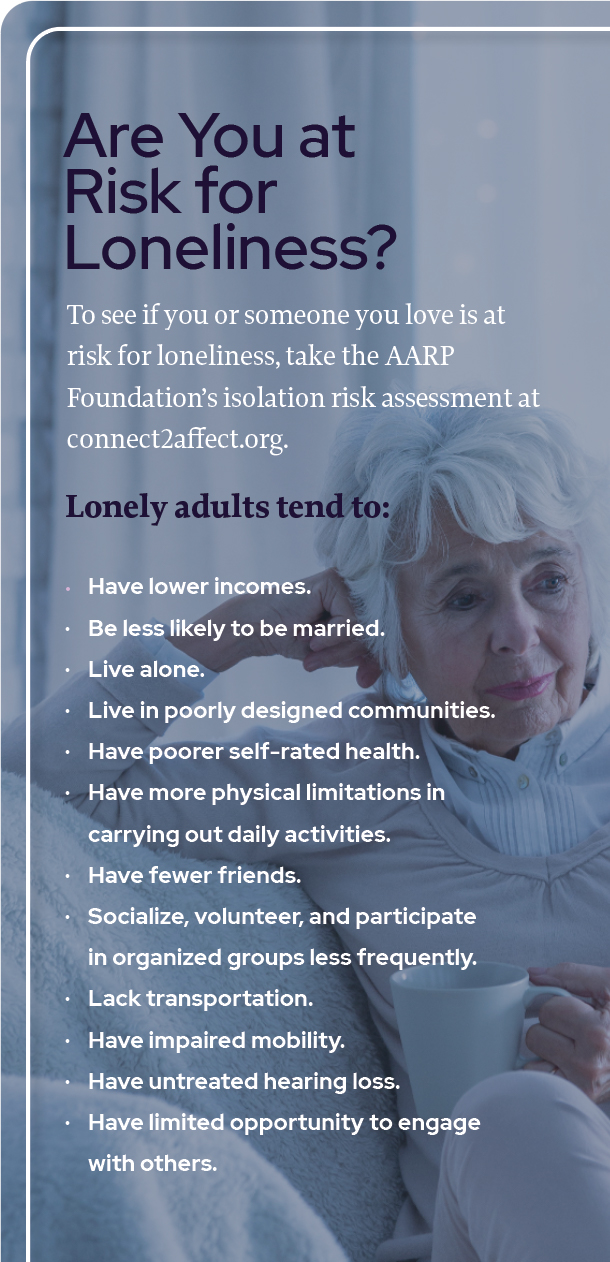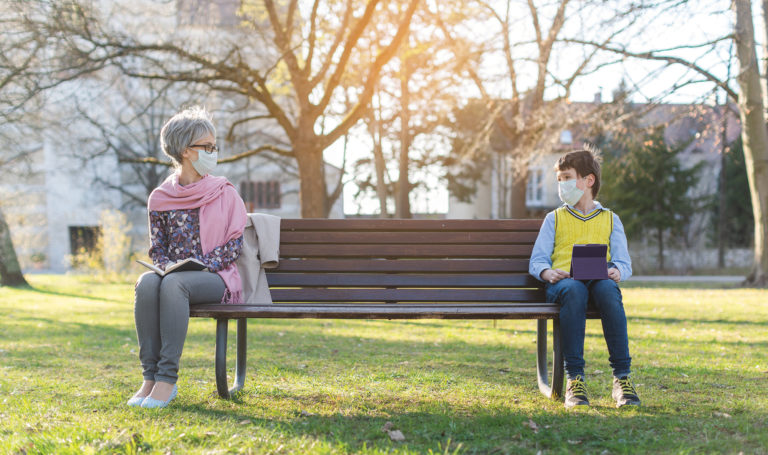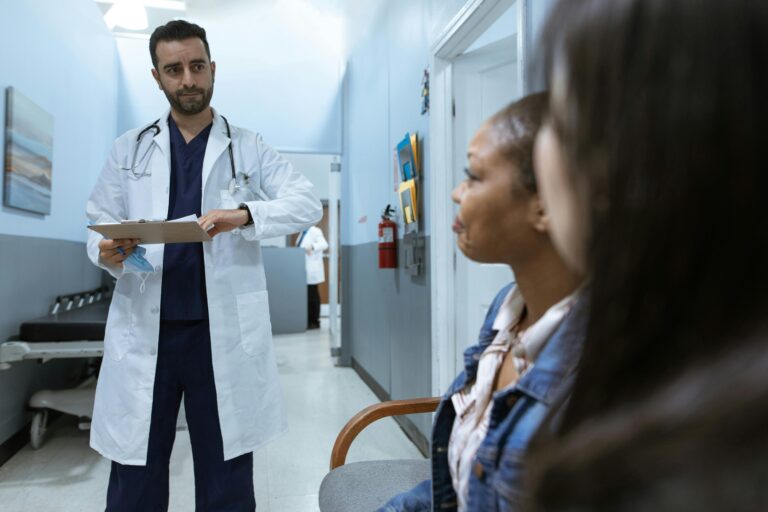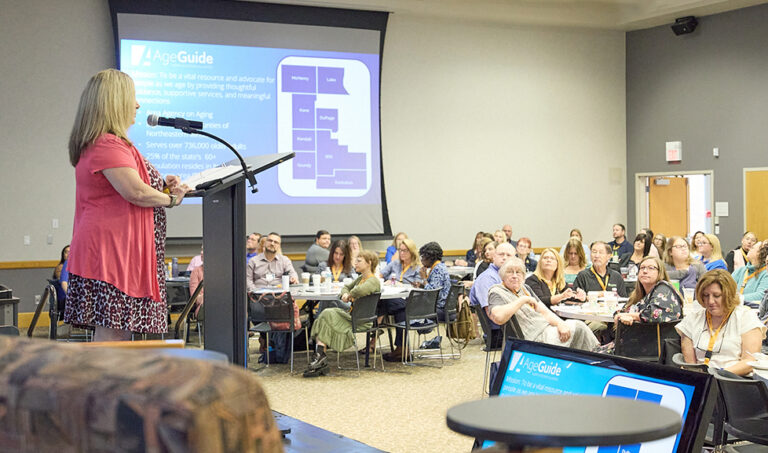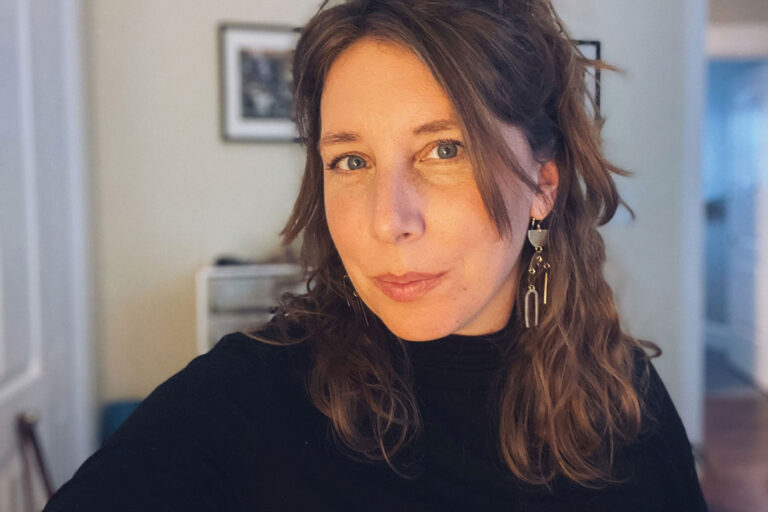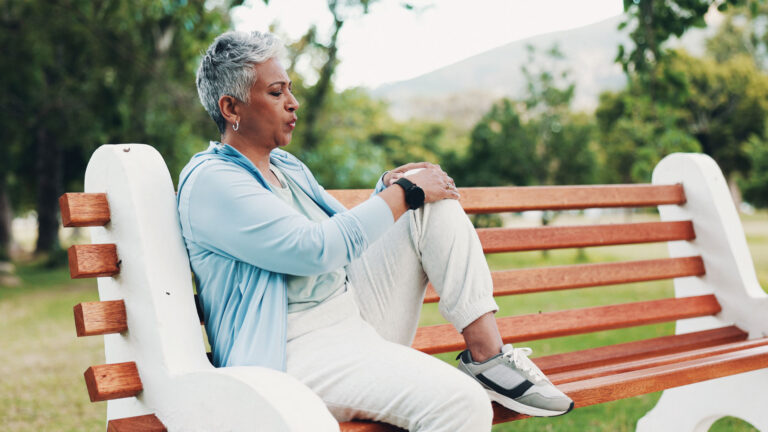
Morgan Lord is a writer, teacher, improviser and mother. She is currently a professor at the University of Illinois Chicago.
Social isolation is at an all-time high. How seniors are connecting
His purple bicycle is still getting as much mileage as ever. Since the start of the pandemic, geriatric nurse practitioner Dwayne Dobschuetz, 72, hasn’t stopped making home healthcare visits. The older adults he cares for need his contact, now more than ever before.
“The seniors I see are feeling very isolated,” Dobschuetz says. “Even their families have not seen them. There’s a feeling of abandonment. Being there in person genuinely helps, and they’re always excited to see me.”
Because of the coronavirus pandemic, older adults have been taking precautions, staying at home and limiting their contact with others due to their increased risk. But while they’ve been avoiding Covid-19, they’ve been hit by something else: an epidemic of loneliness and social isolation detrimental to their health.
Hazards of isolation
Dobschuetz, a nurse with Northwestern Medicine’s home care program, crisscrosses Chicago to see multiple patients a day. He is grateful that, so far, only two of the 300 patients he cares for have tested positive for Covid-19.
As Dobschuetz hops off his bike, he dons his gloves, mask, and face shield, as needed, before he enters a senior’s home to take their blood pressure, care for wounds, and check their physical and emotional well-being.
“We have to be there to check and see what the wound looks like, assess their daily needs, and make sure they’re staying safe at home,” Dobschuetz says. “Lately, I find myself staying longer than I need to because I sense how much they appreciate it.”
Dobschuetz says he feels for older adults in assisted living and nursing home situations who cannot see people, other than caregivers. Contact with family members has been limited, as well as social events within the communities.
“Dining together has been replaced with brown-bag dinners delivered to the door,” he says. “Going to dinner used to be the thing to do. Seniors had a place to go to get dressed up for, and that’s gone for now.”
Nationwide, some 24% of community-dwelling U.S. adults age 65 and older are considered to be socially isolated with sparse social connections, and 43% of adults 60 and older feel lonely, according to “Social Isolation and Loneliness in Older Adults: Opportunities for the Health Care System,” a 2020 report from the National Academies of Sciences, Engineering, and Medicine.
It’s a serious matter. Researchers have associated social isolation with a significantly increased risk of premature death and a 50% increased risk of developing dementia. Poor social relationships are associated with a 29% increased risk of heart disease and a 32% increased risk of stroke, according to the National Academies’ report. On top of that, feeling isolated can suppress the functioning of our immune system — something we all want to be thriving right now.
Social isolation and loneliness have been at an all-time high during the pandemic. “Many older adults have been isolated for the last [nine] months, and it will be at least another six months,” says University of Chicago sociologist Kathleen Cagney, PhD.
Chronic loneliness is especially concerning, Cagney says, as this points to the perceived quality of relationships. Those who are chronically lonely are 30% more likely to die in the next seven years, according to the National Academies report. And loneliness is worse for your health than smoking 15 cigarettes a day, according to former U.S. Surgeon General Vivek H. Murthy, MD.
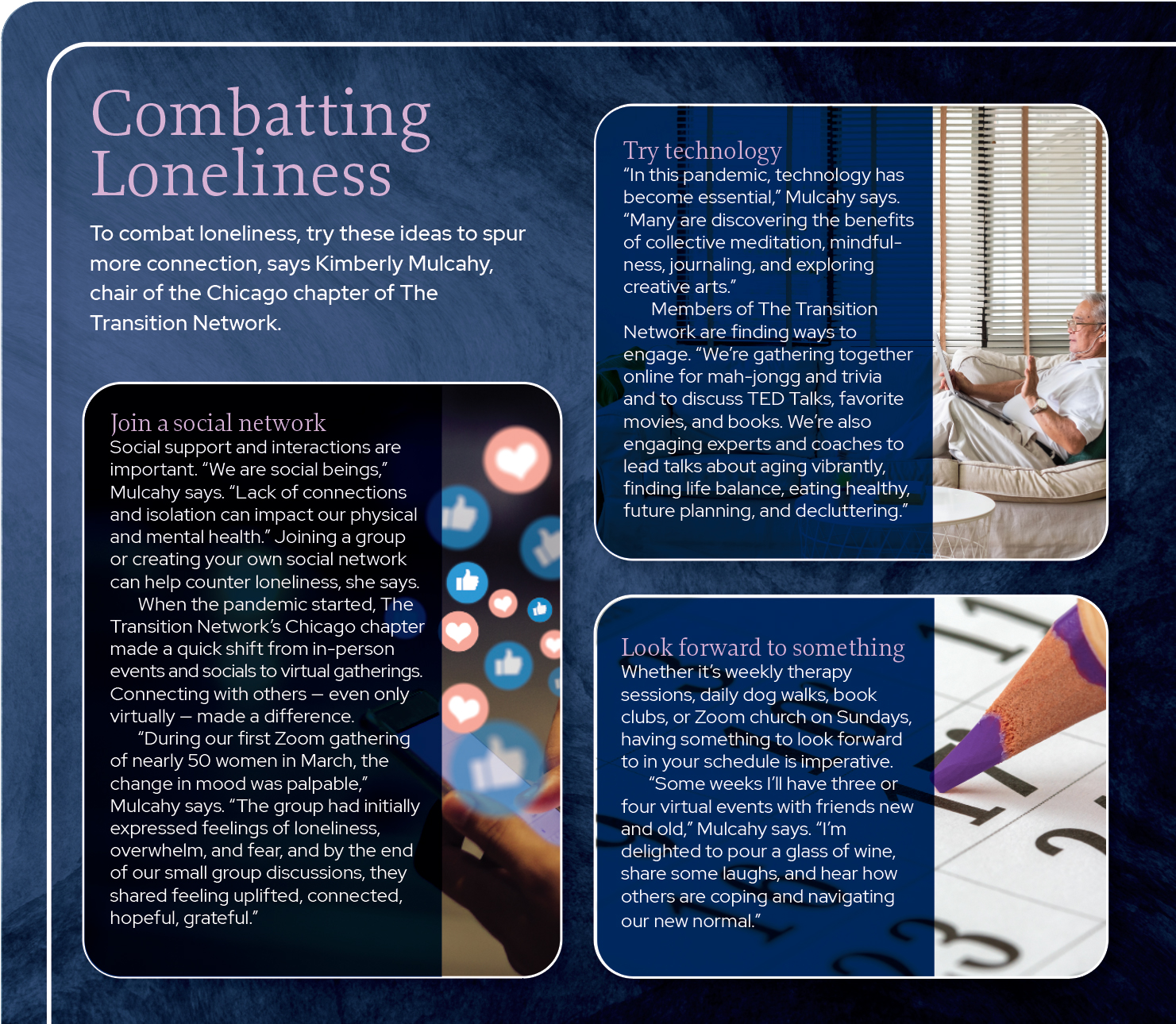
Value of a social network
Between living alone, losing a loved one, dealing with chronic illness, or having vision loss or impaired hearing, the cards are stacked against older adults. Add in a pandemic, and health concerns grow with speed.
“I’ve witnessed this with my parents,” says Kimberly Mulcahy, 60, chair of the Chicago chapter of The Transition Network, a national organization for women 50 and up, many of whom are living solo.
Mulcahy’s father, 88, was the primary caregiver for her mother, who passed away in September after a 10-year battle with Alzheimer’s disease.
“Because of her decline, he was no longer able to leave her alone in
their home,” Mulcahy says. “He lost connections with friends and stopped going to church. He was stressed and depressed. He ended up in the hospital with intense chest pains and severe AFib [atrial fibrillation]. The isolation and caregiving responsibilities seemed to literally break his heart.”
“We have talked a lot about how important it is for him to stay in touch with his friends,” Mulcahy says. “He now picks up the phone every week and calls them. He tells me he can hear the change in their voice when they’re talking. He now walks over to see his neighbors, and they seem to be checking in on each other more. He is definitely stronger now. I can see his spirits are brighter, and his health situation is stabilized for now.”
To combat loneliness, having a large social network and more daily social interactions is key, according to the report “COVID-19: a Lonely Pandemic” in the journal Cities & Health. “Volunteering, whether with a local community group, community center, or hospital, can keep loneliness at bay while improving a sense of self-worth and accomplishment,” the report says.
Of course, it is difficult to volunteer or engage when socially distancing, but there are creative ways to safely be a part of your community. In one effort — Seniors Overcoming Social Isolation (SOS), through Northwestern University’s Feinberg School of Medicine — medical students called older adults living in long-term-care facilities and in the community who were at risk of social isolation during Covid-19. Other medical schools could adopt this phone outreach strategy, they say.
Finding purpose
“Now is the time to know everyone in your community who needs help,” says Cagney, who studies how isolation and loneliness can have more serious ramifications on lower-income Chicago seniors.
“Know the people on your block who may need help and connect with them in a safe way. Slip notes under their door, that you’re grabbing groceries at 2 p.m., and if [they] need anything at all, let [you] know.”
Gloria Reed, 68, of the Southeast Side of Chicago, is the full-time caregiver for her husband, who is 82 and had a stroke in 2017. “I appreciate my neighbors,” Reed says. “We have quiet blocks with good neighbors who check in on one another. They’ll stay with my husband if I ever need to run to the store for an hour.”
She adds, “My heart goes out to those who have lost loved ones.”
Yet, during the tough times of the pandemic, she’s found some silver linings. “I couldn’t go to church before, and now it’s online, so I don’t have to miss.” She’s also enjoyed family Zoom nights with music trivia and reconnecting with her nieces.
In downtown Chicago, Mary Fagan, 84, lives independently in her 18th-floor high-rise. She gets around by motorized scooter with her two toy poodles in tow; one sits on her belly and the other on her ankles. She goes out daily for dog walks and is thankful that dog owners can create a social circle. “I know all the dogs in the neighborhood,” she says.
Fagan lost her husband in October 2019. For a year and a half, Dwayne Dobschuetz was one of his caregivers. “The apartment used to be so filled with caregivers. It was like Grand Central Station in here. Now I’m getting used to being alone,” Fagan says.
“Another hard part has been losing friends,” she adds. “I do not have many left, but I do have good neighbors. In fact, we’ve all been collecting senior donations, like the pile of unopened adult diapers I have [to give] Dwayne.”
That purpose gives Fagan comfort, as has looking at old photo albums. On her apartment balcony, Fagan planted a small herb window garden. She people-watches and gets fresh air as she walks the dogs. She says she has watched gobs of TV but has recently been listening to audiobooks.
“For now, I’m taking it one day at time and not looking ahead,” Fagan says. “I don’t want to relocate. My kids have asked me to come to the suburbs [where they live], but I would be stranded. Chicago is my home.”
Respecting boundaries
Older adults never want to be seen as a burden, and, because of this, they may not express their loneliness during the pandemic.
“In the U.S. there’s such an emphasis on independence and a pride that comes along with living alone,” Cagney says. “We don’t express the need when the need arises. And the dominoes start to fall.”
Cagney advises older adults in need of assistance to ask for help. “Remember, you’re not putting people out, you’re creating a dynamic.”
For those helping, it’s important to understand what type of interactions your loved ones want. “Don’t make assumptions,” Cagney says. “Instead, ask. It should be determined by the person you’re trying to assist.”
“Have that conversation: Are you interested in a short call every night for 10 minutes? Is it a weekly call to confirm medications? Or would you prefer a monthly Zoom check-in or virtual game nights with the whole family?”
Doing something on a regular basis is important, she says, as is providing tech support to make sure older adults feel comfortable with the technology.
Since the pandemic began, Lincoln Park resident Jennifer Shimp, 58, has seen drastic changes in her 90-year-old mother’s mood. Her mother’s isolation and difficulty with technology made connecting nearly impossible, she says.
But over the summer, Shimp was able to visit with her mother and take her for occasional walks outdoors or trips to Target. “I can see such a difference in her health since I can physically be with her,” Shimp says.
At 72 himself, Dobschuetz has senior status. Yet, some of his patients call him “a kid” — including a 104-year-old woman who recently celebrated her birthday in her assisted living facility’s courtyard, with a caravan of cars parading past, honking their horns.
Dobschuetz remains passionately empathetic. He understands the dangers of isolation, especially because he, too, hasn’t seen his grandchildren in months. That brings him closer to the older adults he cares for.
“I feel grateful to offer them that support,” Dobschuetz says, as he hops on his bike to head home after a day of providing care and connection.
